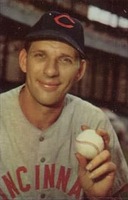 | Back to e-WV
| Back to e-WV
 The West Virginia Encyclopedia
The West Virginia Encyclopedia
 | Back to e-WV
| Back to e-WV
 The West Virginia Encyclopedia
The West Virginia Encyclopedia

Baseball was a vibrant force in industrial towns throughout West Virginia during the first half of the 20th century, especially in the coalfields. Coal companies looked for good players, usually rewarding them with easier jobs, shorter working hours, and time off. Coal companies financed teams to help unify their work forces in towns from Fairmont to Gary, and from Helen, Tams, Fireco, and Switchback to Eccles. There were company leagues, United Mine Workers leagues, and Negro leagues with teams such as the Raleigh Clippers, Holden Bear Cats, Tams Black Sox, East Gulf-Stonecoal Giants, Slabrock Indians, Gary Grays, Coalwood Monarchs, and New River Giants.
Class D minor league professional teams brought people such as Stan Musial to Williamson early in his career, before he became a St. Louis Cardinals star. But the team pay, even at the major league level, was so low that most men earned much more money digging coal than playing ball. Harry Perkowski from Raleigh County played for the Cincinnati Reds in the 1950s. He later recalled that he earned $100 a month playing Major League Baseball, and that the mines paid better. Fred ‘‘Sheriff ’’ Blake, also from Raleigh County, pitched for the Chicago Cubs from 1925 to 1931. When he retired and lived in two rooms at the Beckley Hotel, Blake said his 10 years with major league teams never paid him any pension benefits at all.
Black players could not make the majors during the heyday of coalfields ball, since Major League Baseball remained segregated until Jackie Robinson broke the color barrier in 1947. In the meantime, Black professional teams offered a challenging alternative. Miner Angus Evans once played centerfield for the New York Black Yankees, and Grover Lewis played third for the legendary Homestead Grays. Born in 1903 into an Alabama mining family, Lewis had played outfield for all-Black coalfield teams in Alabama and in Fairmont, on his way up to Homestead near Pittsburgh. When a broken ankle cut his professional career short, he returned to West Virginia to work in the mines, and to play for and manage the Raleigh Clippers. Northfork native Harry “Tin Can” Kincannon was a standout pitcher for the Pittsburgh Crawfords of the 1930s; the mid-1930s Crawfords are routinely ranked among the greatest baseball teams of all time. One of the finest players in the Negro Leagues was Kentucky native Clint Thomas, who after his playing days moved to Charleston and worked for state government.
Coalfield baseball teams withered away as company towns, company stores, and company houses and churches began disappearing after World War II. Mining machines slashed the coal work force statewide. From a high of 141,000 miners in 1947, there were only 45,000 miners in West Virginia in 1969 and about 14,500 by 2023. Coal towns where 3,000 people had lived in the early 1940s dropped to 400 or 500 people by the early 1960s, most of them retired. Broader social forces were at work, as well. Blake believed that the automobile and television spelled the destruction of coal town baseball. The once vibrant Raleigh County League was gone by the mid-1950s.
John McGraw mined coal and played ball with his brothers Gene and Willard in Lillybrook. In the 1980s, after he retired, John McGraw was sad. ‘‘These coalfields are gone, these coal camps. Nobody lives here much now. I wish they still had it around. I always liked baseball, crazy about it.’’ McGraw believed miners were special. ‘‘Whenever they played, they played hard. Whenever they worked, they worked hard. A funny breed, that coal miner.’’
Written by Paul J. Nyden
Aikin, William E.. West Virginia Baseball: A History, 1865-2000. Jefferson, NC: MacFarland, 2006.